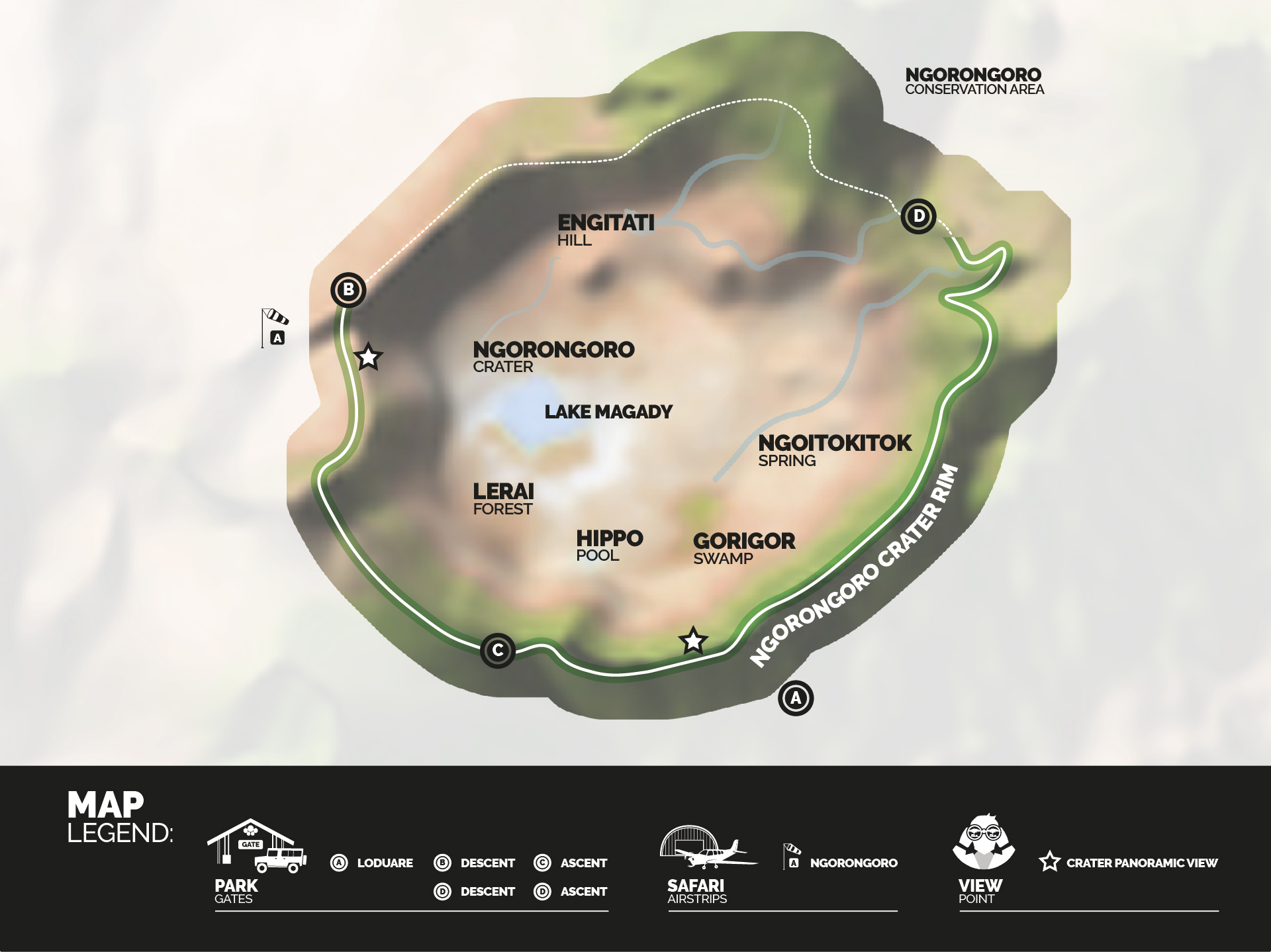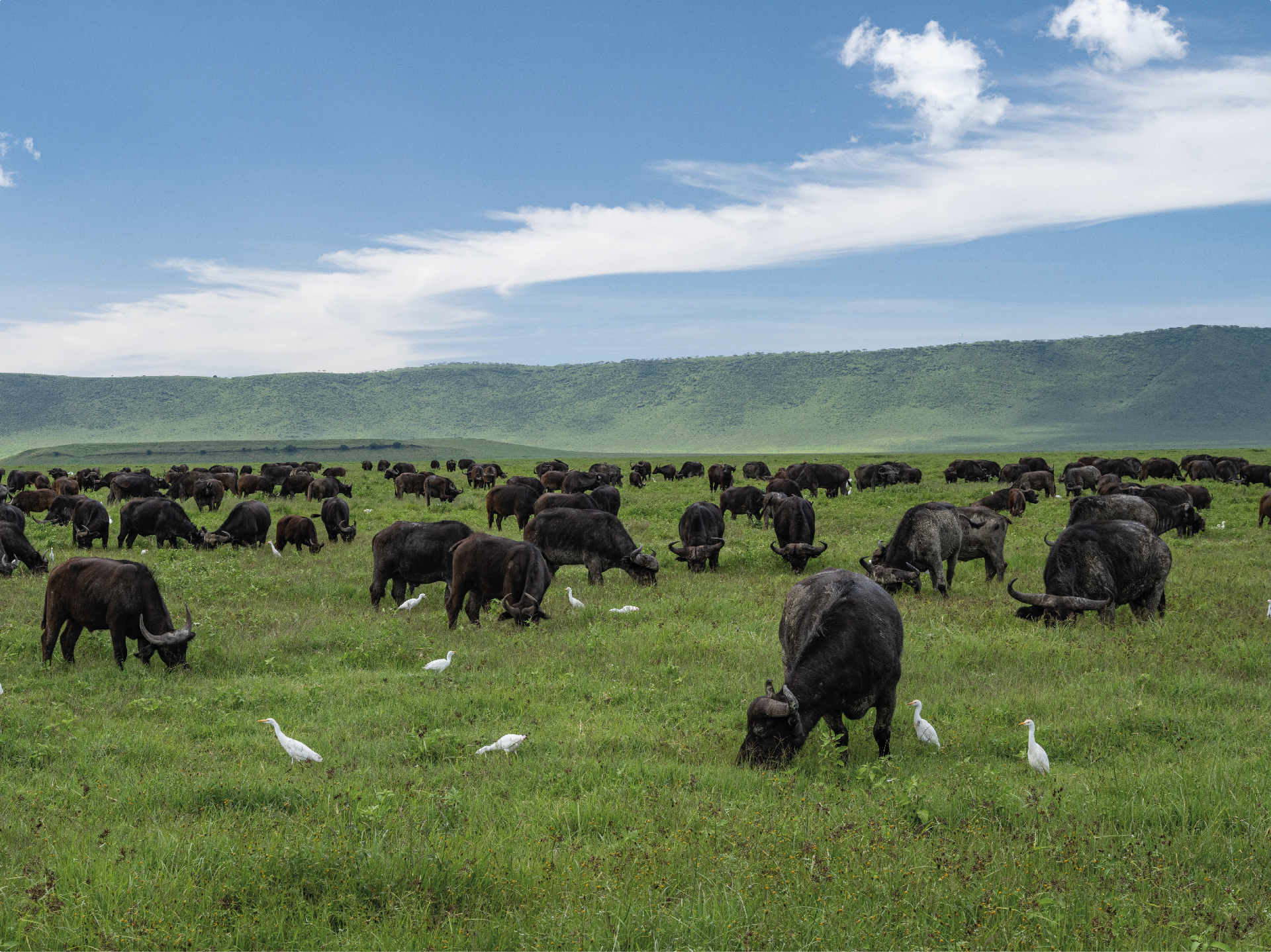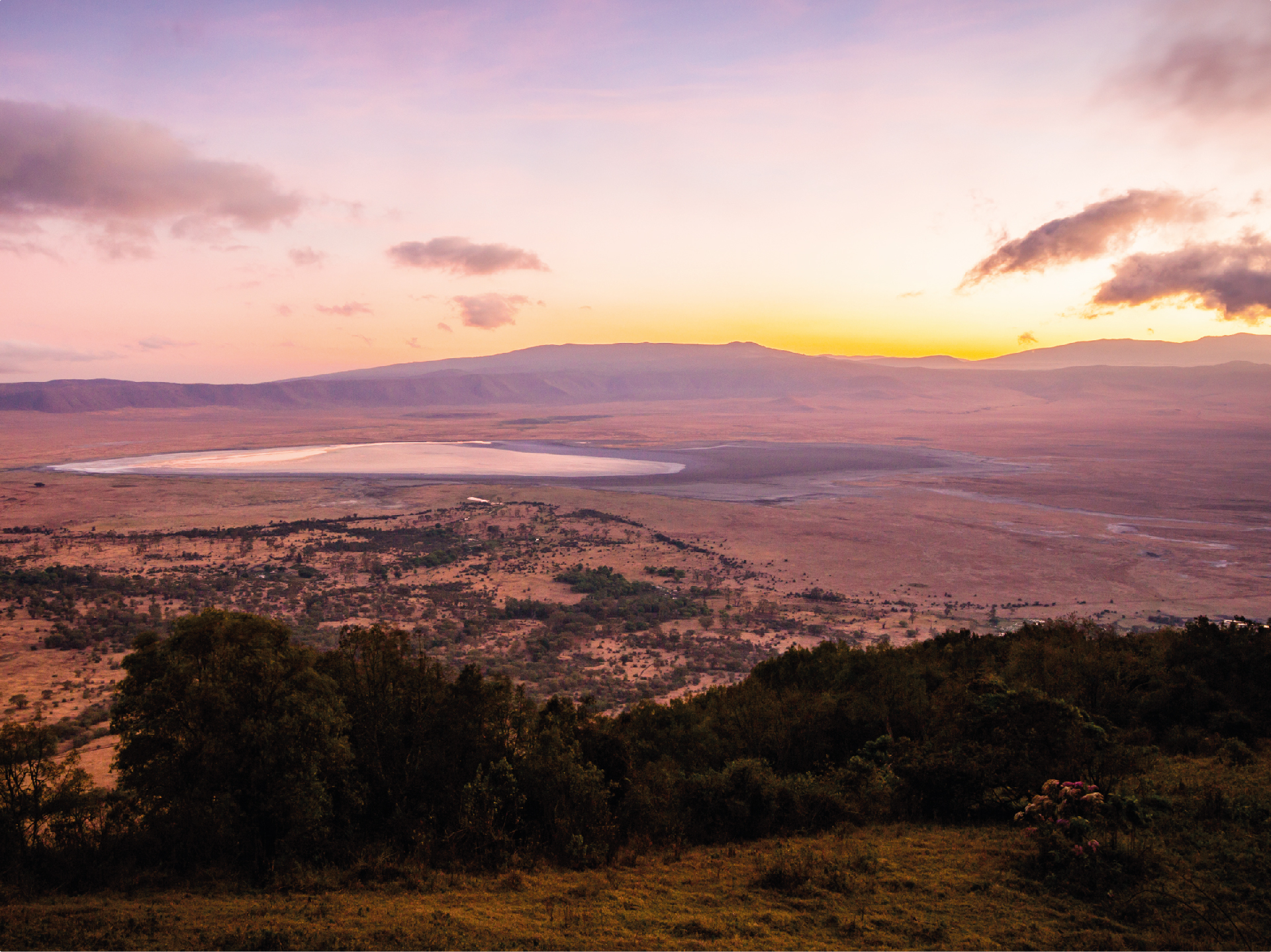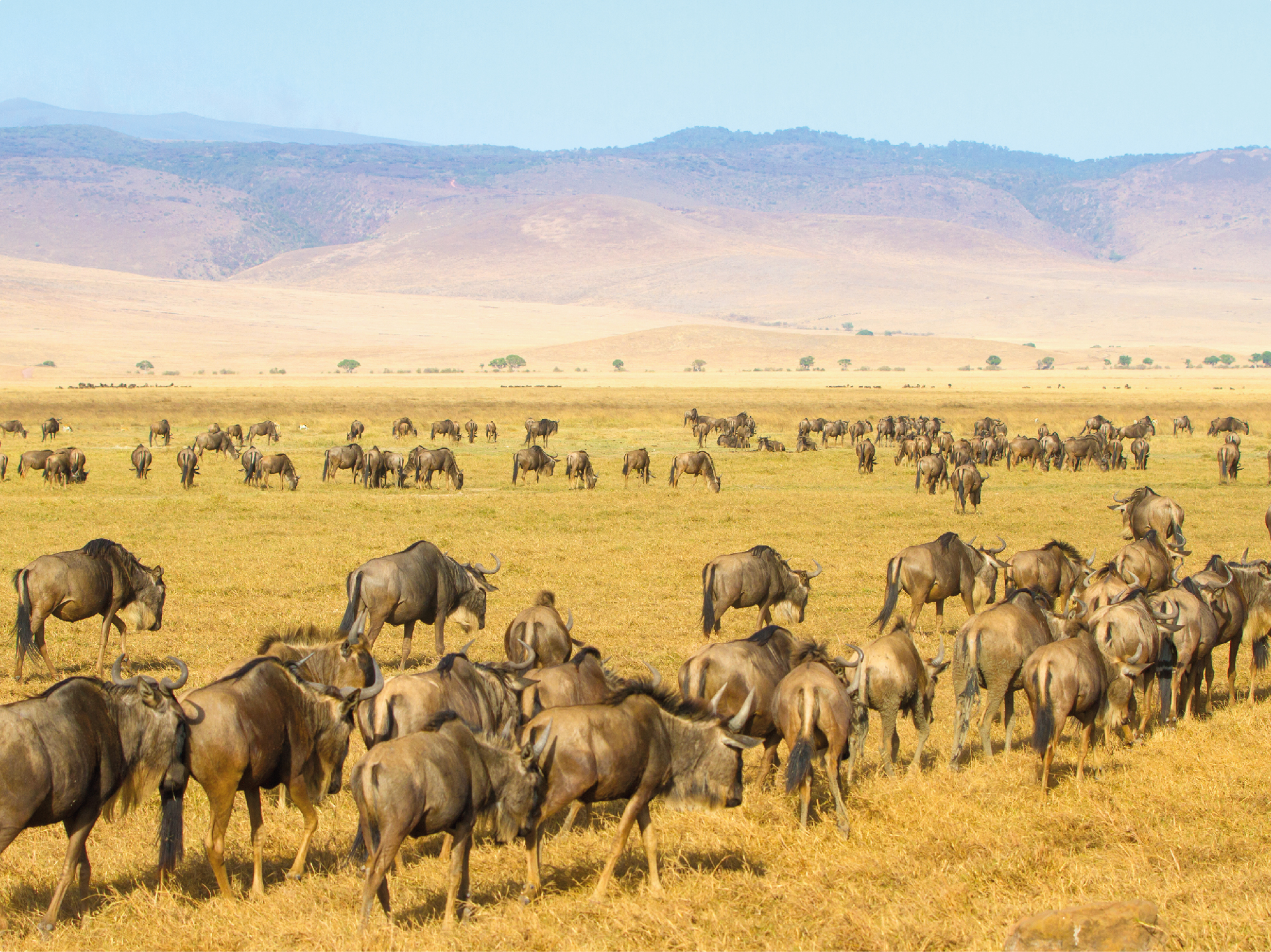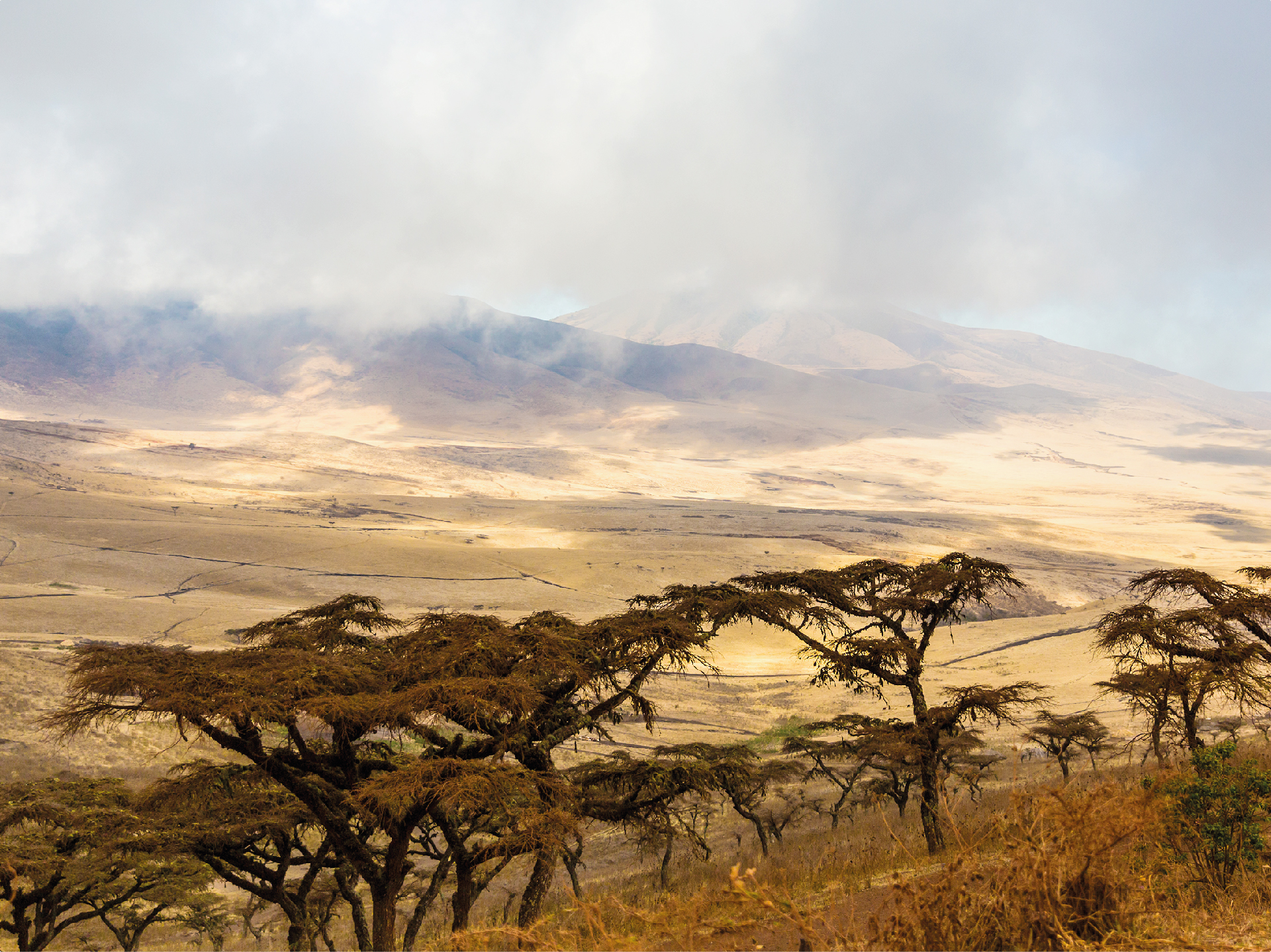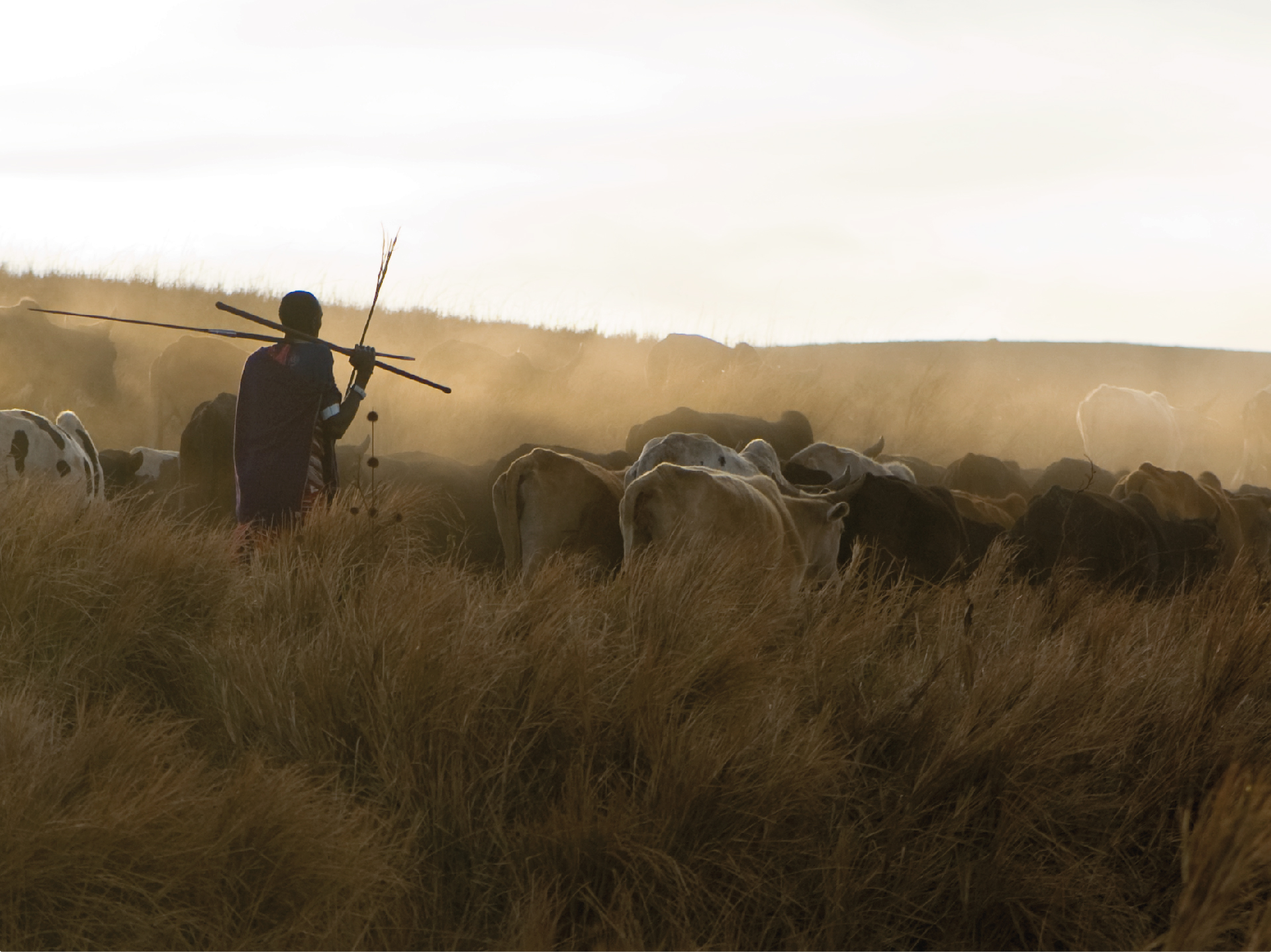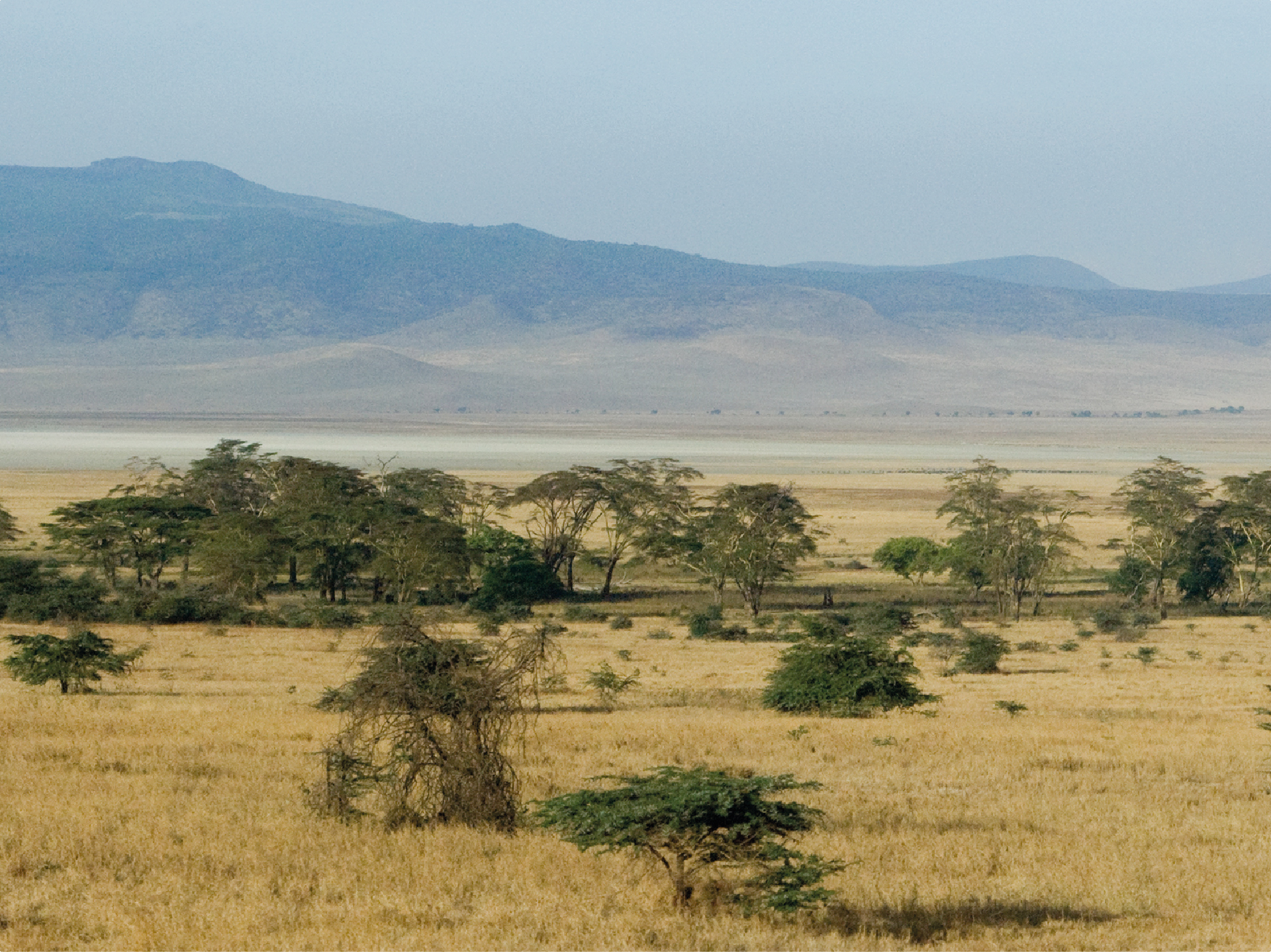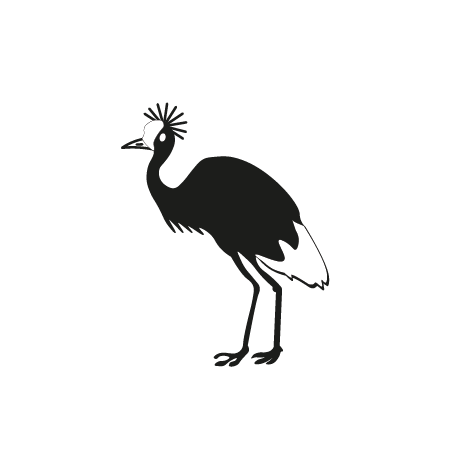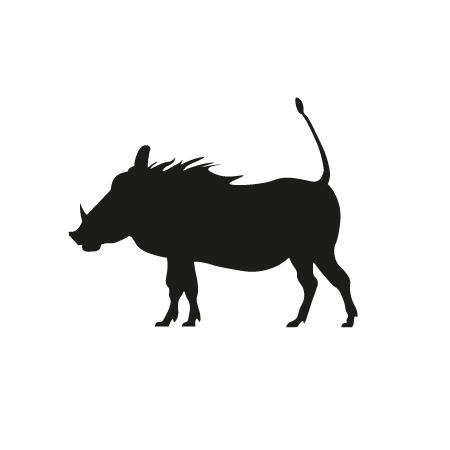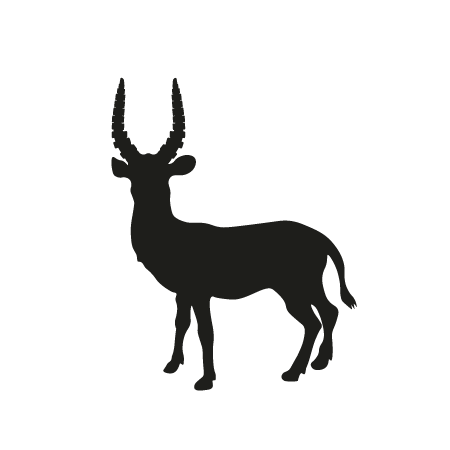Currently considered the eighth wonder of the world, it is the flagship tourist attraction of the
Ngorongoro Conservation Area.
It is an enormous un-flooded caldera formed about 3 million years ago by the collapse of a now inactive volcano.
Due to its geological characteristics, it presents a very special environment and, for this reason, unique in the world. The ponds, small inland lakes and streams, abundant rainfall and night fog help to feed the forests and slopes of the old volcano, creating a true ecosystem in this area.
Savannah occupies the innermost part of the crater, alternating with stretches of swamp, patches of acacia and semi-desert arid areas. In the centre is the shallow Magadi Lake, which is fed by the Munge River.
Due to the particular shape of the caldera, wildlife observation at Ngorongoro is excellent throughout the year because most animals do not migrate, preferring the natural protection that the crater offers. Only a small percentage of wildebeests and zebras move during the rainy season. The bottom of the caldera is home to the highest concentration of wildlife on the planet: an estimated 25.000 large animals reside there permanently, including buffaloes, elephants, gazelles, hippos and rhinos, as well as carnivores such as lions, hyenas, jackals and cheetahs.
The dense forest covering the edges of the crater is a favourite haunt of leopards, warthogs and many bird species. Of particular note is the absence of giraffe and impala, but certainly, it is one of the few places in the whole of Africa where one can encounter all the 'Big Five': elephant, rhinoceros, buffalo, lion and leopard.
See the ‘Big Five’ on our
private safaris in Tanzania.
Ngorongoro, as Kapuscinski wrote: "...is an incredible, unprecedented spectacle: like witnessing the creation of the universe at the moment when the sky, earth, water, plants and wild animals already existed, but not yet Adam and Eve".
